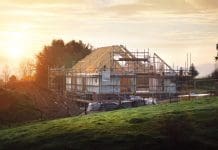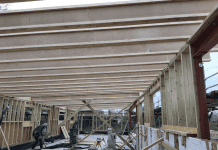Jo Robertson, Senior Policy Officer at BEFS outlines a ten-year strategy to achieve a clear vision for Scotland’s historic environment and how that is measured…
About a year ago the Scottish Government published an overarching strategy for Scotland’s historic environment called Our Place in Time. Informed by stakeholders, this presents a vision for the future of Scotland’s historic environment; that it is ‘understood and valued, cared for and protected, enjoyed and enhanced’. As a ten-year strategy, it describes a long term outcome ‘to ensure that the cultural, social, environmental and economic value of Scotland’s heritage makes a strong contribution to the wellbeing of the nation and its people’.
The strategy goes on to set out strategic priorities under four co-dependent themes:
- Understand: that in order to understand the value of the historic environment we need to continue to develop knowledge and to make this as accessible and useful as possible;
- Care and Protect: secondly, in managing the historic environment we need to continue to apply and develop effective and proportionate protection and regulation with controls and incentives;
- Value: thirdly, much of this depends on public awareness and appreciation of the historic environment – especially given that the vast majority of older pre-1919 buildings and archaeological sites are in private ownership. We need to improve opportunities for active participation with the historic environment;
- Cross-cutting: cutting across these themes are priorities around informed decision-making, high-quality leadership and collaborative working, developing skills and capacity and ‘mainstreaming’ the historic environment across policy areas.
The strategy not only sets out a clear vision for Scotland’s historic environment, it also poses a new challenge around how we go about measuring success in delivering the above priorities. The Strategy states ‘delivering the vision will require the range of bodies, groups and individuals with an interest in, or responsibility for, aspects of the historic environment to work together towards a common purpose, making effective use of the skills, experience and resources of all parties to realise the benefits and values of our historic environment’. The emphasis is on collaboration – working together towards achieving common goals. But how do we go about measuring success that is generated through collective effort?
To this end, BEFS (Built Environment Forum Scotland) was asked to facilitate discussions around preparing a performance measurement framework for the whole historic environment sector. This will develop measures that will inform collective progress towards achieving long term outcomes. The work is ongoing but a number of key themes are emerging.
Why measure performance?
We all do this to varying degrees; in seeking funds, in forward planning, in promoting achievements. The idea behind developing a sector-wide measurement framework is that it will provide a transparent ‘road map’ that practitioners may use to determine what is working and what is not. It will build on the Scottish Historic Environment Audit (already a well-recognised resource of information on the historic environment) to provide a credible source of evidence, which may be used to impart messages, to demonstrate wider relevance and in so doing help reach new audiences. The framework will also provide a mechanism for highlighting successful initiatives and also look at where things are going wrong; this to inform where more support is needed. Fundamentally, this is not an exercise in ticking boxes. It is a way of deciding what to do and to direct resources and effort accordingly.
Operation
What does success in the historic environment look like? It is important to recognise that the meaning of success must be defined first, before determining measures, otherwise the framework risks accepting success as what we can already measure, rather than what needs to be achieved. There are questions to work through around how such a sector-wide framework would operate. It is envisaged the framework will accommodate a core of headline measures along with ‘softer’ information which will help flesh out the meaning of the headline measures.
Capacity-building
The strategy recognises that many organisations will have their own methods of performance measurement and evaluation in place already to suit their own purposes. Workshop discussions on this initiative have highlighted its value in building capacity across the sector, by strengthening our ability to evidence the impact of our work. It is argued that collecting data is the pursuit of why; this starts a conversation and ultimately conversations inform policy. Therefore the task of creating, contributing to and using a measurement framework should, in itself, help generate clarity and confidence in collaborative working.
This initiative is not necessarily about finding perfect measures to illustrate key messages – rather it seeks to challenge, to identify failure as well as success, to identify and address gaps, and to share best practice and celebrate achievements. This initiative is intentionally ambitious and we are keen to reach out to practitioners with an interest in measurement and data holders who may be able to contribute data or help define measures. If you would like to find out more or contribute your ideas/share your experience, please get in touch using the details below.
Jo Robertson
Senior Policy Officer
BEFS (Built Environment Forum Scotland)
Tel: 0131 220 6241
jrobertson@befs.org.uk.
















